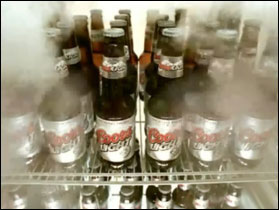
|
Maggie's FarmWe are a commune of inquiring, skeptical, politically centrist, capitalist, anglophile, traditionalist New England Yankee humans, humanoids, and animals with many interests beyond and above politics. Each of us has had a high-school education (or GED), but all had ADD so didn't pay attention very well, especially the dogs. Each one of us does "try my best to be just like I am," and none of us enjoys working for others, including for Maggie, from whom we receive neither a nickel nor a dime. Freedom from nags, cranks, government, do-gooders, control-freaks and idiots is all that we ask for. |

 A hearty Coors Light toast to Assistant Village Idiot in
A hearty Coors Light toast to Assistant Village Idiot in
If you are collecting information about your family origins, you must see The Peopling of the World to see how far back your ancestors go. Kudos to the Bradshaw Foundation for the presentation created by Stephen Oppenehimer that shows...
Tracked: Nov 16, 08:48